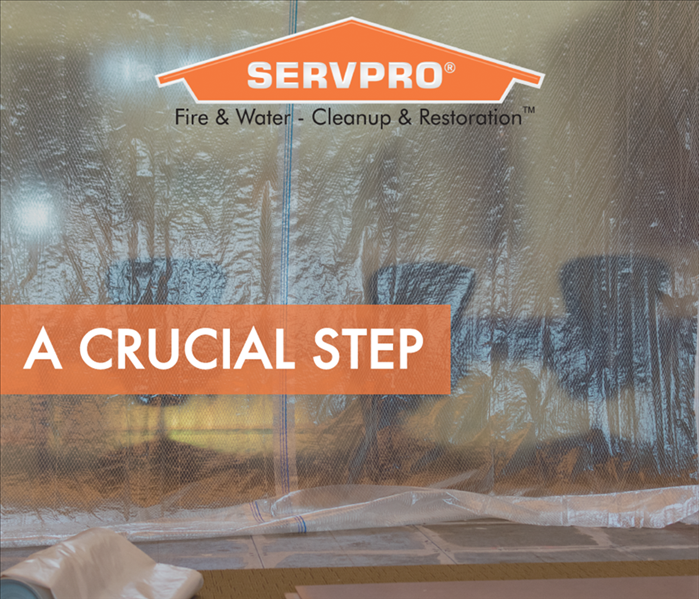The Best Techniques for Preventing Mold Spread in Your Building
5/7/2020 (Permalink)
 Containment is the isolation of the work areas to prevent cross contamination of clean, unaffected areas of the building structure
Containment is the isolation of the work areas to prevent cross contamination of clean, unaffected areas of the building structure
The last thing you want to do when you discover a problem such as back mold is to make it worse. A good principle with mold is to keep it contained in one area as this will make mold removal faster and easier. To do this, it helps to understand a little bit about how mold spreads throughout a building. All types of mold are made up of microscopic scores that float on the tiniest of breezes. They also like warm, damp locations, such as moist attics and basements, bathrooms, and sometimes laundry areas. There are hundreds of different types of mold, and though they might require slightly different cleaning approaches, most types spread in a similar manner.
The Importance of Air Ducts
One avenue of spreading for black mold is your HVAC system. Once the mold spores are in the furnace ducts, they can easily spread throughout the building. Every time the heating or cooling is turned on, more spores are carried to all corners of the building. The drifting spores will likely only take hold in those areas that have high humidity. One of the first actions a qualified mold remediation company will take is to turn off the furnace. The following measures should be taken to facilitate mold containment:
- Physical barriers
- Negative air pressure chambers
- Air filtration
- HEPA vacuums
Steps to clean ducts will also be taken by technicians. Once the mold is contained, the process can move onto mold removal and restoration.
The Value of Professional Testing
Testing for mold can tell you the extent of your mold problem, as well as if you have black mold or a different strain of fungus. It could be necessary to test after the restoration process is complete, to determine if mold is still present or if it has returned. Store-bought mold kits sometimes show confusing positives, since most buildings are likely to have some mold present. A certified mold tester is better able to decipher the results of a test.





 24/7 Emergency Service
24/7 Emergency Service